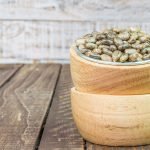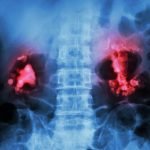Safety and Efficacy of Mesotherapy for Targeted Fat Loss in Aesthetic Medicine
Sharon Gurm, ND
Mesotherapy was developed in France in the early 1950s with a broad therapeutic approach for treatment of a variety of conditions derived from the mesoderm, including: medical aesthetics, trauma, sports injury and pain management. For the purposes of this article, discussion will be limited to the specific application of mesotherapy for treatment of localized areas of fatty tissue.
In North America, commonly used as an alternative to invasive surgical methods such as liposuction or dermolipectomy, mesotherapy has been regarded as a ”safe and effective” non-surgical intervention for treatment of undesirable areas of localized adiposity.
Safety and efficacy however, are dependent on a number of parameters, such as: practitioner’s level of training, application of mesotherapy techniques, choice of injection solution, amount of material injected, potential adverse reactions and health of the patient. The purpose of this article is to provide a review of current literature documenting safety and efficacy of mesotherapy in practice and discuss some parameters that can enhance treatment outcome.
Techniques in Mesotherapy: An Overview
Mesotherapy involves microinjections (2-12mm depth) of solution (0.1-0.3mL) into the subcutaneous tissue of the area(s) to be treated. Typically, treatments are performed weekly, bi-weekly or monthly depending on the area to be treated. Commonly treated areas include:
- Abdomen (upper belly, under belly, upper abdominal)
- Lateral area of the upper thighs
- Iliac crest
- Outer waist
- Upper arm
- Axillary fold
- Gluteal region
- Upper leg
Ingredients used in mesotherapy vary depending on the physician, the targeted area and the condition to be treated (i.e., localized adiposity, cellulite, etc.). Injection solutions used are often a combination of amino acids, vitamins, minerals, and homeopathic and conventional medicines. The solution should be carefully and accurately chosen by the trained physician. Below is a list of some commonly used ingredients in mesotherapy:
- Phosphatidylcholine (PC) and deoxycholate (DC)
- Hyaluronidase
- Aminophylline
- Yohimbine
- L-carnitine
- Procaine or lidocaine
- Homeopathic injectables
Commonly Used Agents for Localized Adiposity
PC and DC
PC is an antioxidant derived from natural soy lecithin. DC is an enzyme that occurs naturally in bile and acts as a detergent (emulsifying and tensoactive properties). PC is used intravenously in the treatment of fat embolism, atheroma and fatty liver disease. It has been shown to alter metabolism of fatty substances, thereby reducing blood cholesterol and lowering triglyceride levels.
In mesotherapy, PC is injected subcutaneously for its ”fat dissolving” properties and is often the main ingredient in the injection solution. DC is usually given in combination, to render the fat affected by the PC water soluble. The dissolved fat is then carried through the bloodstream and excreted by the kidneys and bowel.
Although the exact mechanism of action of PC at the cellular level of adipocytes is somewhat unclear, in vitro studies have shown that adipocyte metabolism is adversely affected by PC and DC. A study published by Rose and Morgan in 2005 revealed the histological changes occurring from injection of PC/DC into subcutaneous fat; microscopic evaluation of pre- and post-treatment biopsies demonstrated disruption of adipocytes and simultaneous generation of an inflammatory response consisting of lymphocytes, neutrophils, plasma cells and macrophages at one week post-treatment. At two weeks post-treatment, the biopsy revealed that macrophages containing fat inclusions and fat necrosis were evident. Further studies have purported that the degradation process persists for approximately 10 weeks post-treatment, similar to any traumatic injury. It is theorized that a portion of the fat is metabolized in the liver via HDL.
Several studies have documented the clinical efficacy of PC in the treatment of localized fat. Hexsel and colleagues reported the results of their study in The Journal of Drugs in Dermatology (2003), in which 208 patients with different patterns of localized fat on the body (thighs, hips, abdomen, flanks) and face (chin area) were treated over a seven-month period. Only a few patients failed to notice a reduction in subcutaneous thickness, and discomfort was slight (moderate to severe edema, erythema, mild bruising, moderate pruritis and localized heat).
Another study by Heinrich (2004) conducted in Vienna demonstrated significant reduction of fat deposits. One hundred male and female patients with various patterns of localized fat deposits (hips, waist, thighs, knees, arms, upper and lower abdomen, back) were treated with PC. Each patient received treatment on one or more specific areas to be corrected. Amounts of PC injected (between 5-30mL per session) and number of injections varied according to individual needs and quantity of localized fat deposits in each patient. The number of sessions also varied (between one and three), with an average of 14-30 days between each session. Patients were asked to hold their body weight stable for the duration of the study to ensure that reductions of fat deposits were not the result of dieting and to assure the objectivity of the results. The results varied individually between 1-7cm circumferential reduction of specific areas within a treatment session. Invariably, some individuals responded better than others. No serious side effects were noted. All patients reported some degree of discomfort, mild edema and pruritis at the site of injection(s). Heinrich concluded that, “This method could therefore offer a non-surgical alternative to the people objecting surgery who are scared of the liposuction idea, which is why they may choose the [mesotherapy] option.”
Although most of the studies report only mild side effects of PC/DC post-treatment for reduction of localized adiposity, there is the possibility of more significant side effects in some individuals. Potential complications that can occur involve the recruitment of fibroblasts and other tissue-repairing cells to the treated site. This mechanism occurs naturally in wound repair and typically results in the production of collagen. The problem arises when an over-production of collagen (likely caused by too high a dose of PC and DC per site) occurs, which results in the formation of ”inflammatory nodules.” These inflammatory nodules are generally broken down by the body’s own healing mechanisms and dissolve within one to three weeks. However, in some individuals the nodules may persist for longer than expected. Although these nodules are generally not visible externally and will dissolve over time, if they are palpable, the patient may be somewhat displeased with the aesthetic outcome. This adverse effect can, however, be avoided by taking caution in the amount and depth of PC/DC injected per site.
Another potential side effect of PC is a hypersensitivity reaction to the substance. This appears as a fine, pruritic, maculopapular rash distant from the treated area. Performing a patch test in a small region of the target area prior to treatment is advisable to identify the allergy potential of the individual.
Hyaluronidase
Hyaluronidase is a naturally occurring enzyme that increases tissue permeability and promotes the distribution of other agents. In mesotherapy, it aids in the breakdown of connective tissue bands that create the dimpled appearance of cellulite. Connective tissue contains a high amount of hyaluronic acid, and hyaluronidase is used to effectively break down the hyaluronic acid. Hyaluronidase also enhances the absorption and dispersion of PC, allowing for more efficient breakdown of adipocytes interspersed between layers of connective tissue bands.
Allergic reaction to hyaluronic acid or hyaluronidase is the only reported side effect of this biological agent. Hyaluronidase can create a wheal and flare reaction of the immediate or delayed hypersensitivity type. Performing a skin test prior to treatment would reveal potential for allergic reaction. Hyaluronidase is not meant to be used in excessive amounts in mesotherapy.
L-Carnitine
Literature shows that l-carnitine facilitates long-chain fatty acid entry into cellular mitochondria, therefore delivering substrate for oxidation and subsequent energy production. In mesotherapy, l-carnitine transports the fatty acids liberated by the action of PC into the mitochondria for energy utilization. In other words, l-carnitine functions to help maximize fat removal.
No side effects have been reported, although as with any agent, allergy is always a potential adverse effect. Performing a patch test prior to use will help identify allergic potential.
Yohimbine
Yohimbine is an alkaloid found in the inner bark of Pausinystalia yohimbe. As a biological agent, it is a parasympathomimetic drug that is a presynaptic alpha-2-terminal blocker, thereby inhibiting norepinephrine release. In mesotherapy, it is used to cause local vasodilation in the targeted area of fat loss.
Yohimbine, even when used in low amounts, may increase irritability, nervousness and anxiety. In susceptible individuals, this can potentially trigger a reaction similar to a panic attack. Given in dosages as low as 1mg, susceptible individuals have been reported to experience side effects. Dosages of more than 5mg can cause this type of reaction in non-susceptible patients. In my opinion, Yohimbine is not a necessary agent to obtain effective results in mesotherapy. Exclusion of yohimbine from the injection solution is not likely to alter the outcome of the treatment in most individuals, but can help increase the safety of the procedure. It is highly recommended to do this if the patient is a potentially susceptible individual.
Aminophylline
Aminophylline is a mixture of theophylline and ethylenediamine. It is a common asthma medication and has a mode of action and efficacy similar to that of caffeine. In mesotherapy, it is used to promote the breakdown of fat and induce vasodilation. Aminophylline effectively inhibits phosphodiesterase, thereby increasing cAMP concentration, which allows for more efficient breakdown of fat in the cell.
Aminophylline has a narrow therapeutic index. Adverse reactions can be encountered at dosages of around 250mg in most individuals. Side effects include nausea, vomiting and diarrhea. Cardiac arrhythmias and seizures are possible at serum levels exceeding 20mg/ml. As with yohimbine, I believe exclusion of aminophylline from the injection solution will not largely affect the outcome of the mesotherapy treatment, but allows for a much safer approach to treatment.
Individual Parameters for Efficacy of Treatment
There is no question that a healthy diet and exercise program are the foundations of any targeted fat-loss program. Encouraging patients to follow a regimented diet and exercise program (including a combination of cardiovascular and weight training exercise) will ensure a positive outcome when undergoing a mesotherapy procedure for fat loss. Other patient factors include:
- Genetic tendency to store fat in certain areas of the body
- Degree of skin elasticity (i.e., stretch marks, significant and rapid weight loss causing skin slackening)
- Age
- Lifestyle considerations (i.e., nicotine and drug use, medications)
- Weight (ideal candidates should be within 15-20 pounds of their goal weight)
- Overall health
Based on these variables, the practitioner can then provide the patient with an assessment of predicted effectiveness and estimated number and frequency of treatments required. Ensuring that the patient’s expectations are in line with the above parameters allows for a greater satisfaction with treatment outcome for both patient and physician. Note that mesotherapy is contraindicated in individuals with diabetes or any other condition that may impair wound healing. It is also not recommended in pregnancy or individuals with a history of cancer or any other serious chronic disease.
The physician can invariably alter the outcome of the treatment procedure by diligently performing a thorough investigation to identify areas of weakness or imbalance – both physical and physiological. This should undoubtedly consist of a complete health history (diet, lifestyle), a comprehensive assessment involving blood/urine/saliva tests to identify an endocrine imbalance, as well as any other factors that may interfere with weight/fat loss. In addition, the combination and amounts of individual agents administered in targeted areas, along with the injection technique of the physician, will also impact treatment outcome. In my practice, I start with smaller concentrations of injection for the first few treatments to assess how the individual tolerates the treatment. If well tolerated and the patient is willing, larger dosages are used with subsequent treatments.
In summary, mesotherapy has become a widely popularized method of targeted fat reduction in North America. It is an effective alternative to invasive surgical procedures without the downtime and potential for side effects as is associated with surgical interventions. There is well-documented research demonstrating a high response and satisfaction rate in individuals who undergo mesotherapy; however, as with any relatively ”new” procedure, further evaluation is needed to determine its longevity and to support its efficacy and safety in treatment for localized adiposity (among other conditions).
One must keep in mind that mesotherapy should not be a substitute for a healthy diet and lifestyle. I make it a general rule not to offer mesotherapy to any patient who does not follow basic principles of a healthy diet; does not follow a routine exercise program; is a smoker or drinks excessive amounts of alcohol; and/or is not prepared to follow other recommendations for achieving or maintaining optimal health. Furthermore, I ensure that the patient’s expectations are in keeping with the limitations of mesotherapy in any given individual, in accordance with the parameters outlined earlier.
Following these guidelines, mesotherapy can be a useful tool for helping patients achieve the aesthetic look they desire without the use of invasive and potentially toxic substances. For the ND with a special interest in bariatric medicine, mesotherapy can prove to be a simple, safe and effective adjunctive therapy in practice. When coupled with other naturopathic therapies (i.e., detoxification and nutrition), one can greatly enhance the overall effectiveness of mesotherapy treatment, resulting in even greater patient satisfaction and clinical outcome.
Mesotherapy Case Studies
GP, 37yo male
Chief complaint: Localized adiposity (lateral area of the upper thighs, above and below umbilicus, below pectoral region)
Pharmaceutical meds: None
Goal: Lose two inches around the waist
Treatment summary: Only one session needed to achieve desired outcome
Adverse effects reported: Mild pruritis lasting two hours post-treatment and localized to the area treated; mild bruising, edema persisting for four days post-treatment
BM, 59yo female
Chief complaint: Generalized adiposity
Pharmaceutical meds: Hydrochlorothiazide (7 yrs)
Goal: Lose up to ten inches around the abdominal area (including the circumference above and below the umbilicus, hips) and three inches around the circumference below the breasts
Treatment summary: Total of 12 inches lost after seven sessions of mesotherapy
Adverse effects reported: Moderate bruising, edema persisting for six days post-treatment
KK, 36yo female
Chief complaint: Localized adiposity (lateral area of the upper thighs and below umbilicus) developed after childbirth, endocrine imbalance
Goal: Commence mesotherapy after hormone balance is established
Pharmaceutical meds: None
Treatment summary: Lost two inches after two months of treatment for hormone imbalance; lost another five inches after four sessions of mesotherapy. Patient is very pleased with results and is continuing treatment to lose a total of eight inches
Adverse effects reported: Moderate bruising with first two sessions; mild bruising thereafter; edema, which persisted between five to seven days post-treatment
AJ, 40yo male
Chief complaint: Localized abdominal adiposity below the umbilicus and lateral area of the upper thighs
Goal: Lose four inches around the waist
Pharmaceutical meds: None
Treatment summary: Lost five and one-half inches after four treatments
Adverse effects reported: Mild bruising; mild pruritis noted after first session only and lasting for one hour post-treatment; edema for up to five days post-treatment
 Sharon Gurm, ND graduated from CCNM in 2005 with a naturopathic degree, and a bachelor’s degree in cell biology and genetics from UBC. While completing her undergraduate degree, she began a research position at the BC Cancer Agency, which she continued for two more years prior to commencing the naturopathic program in Ontario. Dr. Gurm is the founder and medical director of Port Moody Naturopathic Health & Wellness in Port Moody, B.C., where she has established a family practice focusing on women’s health, hormone balance, fertility, autoimmune conditions, chelation and pain management. Her side interests include mesotherapy and other natural anti-aging therapies.
Sharon Gurm, ND graduated from CCNM in 2005 with a naturopathic degree, and a bachelor’s degree in cell biology and genetics from UBC. While completing her undergraduate degree, she began a research position at the BC Cancer Agency, which she continued for two more years prior to commencing the naturopathic program in Ontario. Dr. Gurm is the founder and medical director of Port Moody Naturopathic Health & Wellness in Port Moody, B.C., where she has established a family practice focusing on women’s health, hormone balance, fertility, autoimmune conditions, chelation and pain management. Her side interests include mesotherapy and other natural anti-aging therapies.
References
Chase C: Common complications and adverse reactions in a mesotherapy practice, American Journal of Mesotherapy (1), 2005.
Heinrich K-G: Injection-lipolysis (‘fat-away injection’) study, www.mesotherapyworldwide.com/images/pdf/Study_100_patients_Karl_Georg_Heinrich.pdf, 2004.
Hexsel D et al: Phosphatidylcholine in the treatment of localized fat, J Drugs Dermatol Oct;2(5):511-8, 2003.
Reiman P: Fat deposit, cellulite tx options: research reveals some side effects, good results with phosphatidylcholine. Dermatology Times, Feb 1, 2005.
Rittes PG: The use of phosphatidylcholine for correction of localized fat deposits, Aesthetic Plastic Surgery 27:315-318, 2003.
Rose PT, Morgan M: Histological changes associated with mesotherapy for fat dissolution, Journal of Cosmetic Laser Therapy 7:17-19, 2005.
Rose PT: Mesotherapy in the treatment of localized fat deposits, American Journal of Mesotherapy (2), 2005.
Rotunda AM et al: Detergent effects of sodium deoxycholate are a major feature of an injectable phosphatidylcholine formulation used for localized fat dissolution, Dermatological Surgery Jul; 30(7):1001-1008, 2004.
Yeragani VK et al: Heart rate and QT interval variability: abnormal alpha-2 adrenergic function in patients with panic disorder, Psychiatry Res Dec 1;121(2):185-196, 2003.









